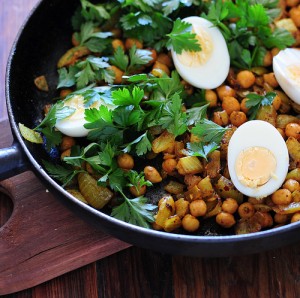It’s official now. I can no longer eat at potlucks, family gatherings or friends’ houses. Restaurants are mostly out, too, although some of the better ones can manage a gluten-free, dairy-free meal of steak, steamed broccoli and a salad.
Why the big change? About a month ago I found out I am allergic to milk and wheat. It was an unexpected shock that sent me reeling. The wheat wasn’t such a big deal. I’ve barely had wheat or gluten for almost two years now, and officially being allergic to it will help solidify my commitment to being wheat-free. But no dairy? That seems impossible for me. (Although I do love dairy-free zucchini bite sandwiches with low oxalate hummus. Don’t they look yummy!)
Frankly, I’ve been having a huge adult temper tantrum since I found out about my new restrictions. The first night I celebrated by having my all-time favorite comfort food — fried macaroni and cheese. Then I proceeded to eat everything dairy for a week until my brain finally wrapped itself around the idea of letting go. Since then I have reduced my dairy consumption by about 80%. But the last little bit is so hard. And my diet is so restricted anyway. It feels like my last true comfort foods are being taken from me and the grief is profound.
I realized over the past few weeks that this might be how so of you felt when you started the low oxalate diet. First, there’s the denial, then anger, then sadness, and then hopefully acceptance. For some of us, acceptance comes quickly. For others, it’s a long, slow process. I am constantly reading email, comments or posts from newbies to the low oxalate diet who are freaked out because “there’s nothing they can eat.” Obviously, this isn’t true. There’s an enormous variety of foods that can be eaten on the low oxalate diet. But for someone who uses high oxalate ingredients in almost every food they eat, it’s a huge adjustment to learn to cook or to to buy different foods. After my initial dairy-free-for-all, I also went through a “there’s nothing I can eat” phase. I hadn’t realized it, but almost every food I cook contains dairy in some form. And if it doesn’t, it always tastes better at the table with a plop of yogurt, butter, or cheese. I also hadn’t realized it, but I had reached my metaphorical line in the sand. Each time I’ve tried a dietary change that might improve my health, I’ve made the transition with only a little fuss. Even with foods I used to love, I patiently found substitutes, grieved and let go. This time I’m fussing. This time it feels like too much.
My saving grace is that I often test my recipes with non-dairy ingredients to make sure they work, so I have the creativity, skill and knowledge to give dairy-free a good try. And after living for more than twenty years with severe health restrictions on my diet, I have developed strategies for transitioning. Some of these strategies may help you transition to the low oxalate diet (or follow it better), so I thought I’d share my going dairy-free process.
Step One: Get rid of the obvious, easily-removed offenders.
With dairy, this meant no longer snacking on cheese, drinking a glass of milk with my coconut flour banana bread, or putting cream in my tea. Of course, tea without cream wasn’t easy emotionally for me, but it was easy from a practical standpoint. For a low oxalate newbie this step might mean to stop making salads out of spinach, stop eating nuts as a snack and stop ordering baked potatoes and french fries at restaurants. If it’s high oxalate and easy to avoid from a practical stand-point, then start letting it go.
Step Two: Change your cooking techniques.
For my dairy-free process, this meant no more cooking with butter. I used to cook almost everything in butter: eggs, veggies, fruits etc. I am slowly adjusting to the taste and different cooking heats and times for coconut oil, animal fats and olive oil. I’ve even started using flavored olive oil as a substitute for butter in my favorite comfort foods like mashed cauliflower, although I’m still resisting not putting butter on banana bread. Some changes are going to take more time.
For a low oxalate newbie, changing cooking techniques might mean not standing over the stove with a shaker of cumin, cinnamon or tumeric in hand. When I started to eat low oxalate, changing my “spice” habits was the hardest part of learning to cook low oxalate foods. I used to put cumin, cinnamon and chili powder in everything! Now I use a lot fewer spices and herbs, plus I’ve learned to enjoy some low oxalate spices and herbs that I’d barely used before, like cilantro and cardamom.
Step Three: Read labels and purge.
This was pretty simple this time around. I’ve already purged almost every processed food in the house, so there weren’t many to get rid of (one of my sons has a peanut allergy which basically means no processed foods). What wasn’t so simple, was realizing that I no longer could eat at most restaurants or gatherings of family and friends. I may purge at home, but processed foods are so pervasive in our culture that it’s almost impossible to find things while eating out that don’t contain something I choose not to eat for my health (e.g. high oxalate foods, grains, MSG, nitrates, dairy, sugar or high carbohydrate).
For a low oxalate newbie, reading labels and purging may be a longer, harder process, especially if you’ve never had major food restrictions before. I would suggest starting with high oxalate ingredients that are a main component of the food (such as eliminating any granola, breakfast or protein bars that contains nuts or chocolate) or eliminating any salad mixes or soups that contain spinach. After that, it gets murkier, which is why many low oxalate dieters make a lot of their food from scratch. If you’ve prepared a food from tested ingredients, you can figure out the oxalate level.
Step Four: Make necessary changes to your family’s meals to help you succeed.
For me, this has meant changing the ingredients in many of my recipes so they no longer include dairy. Although I don’t want to deprive my sons of dairy, I also don’t want to cook two separate meals and especially not meals that I can’t taste test because of dairy content. This is definitely a work in progress, but I eventually want my main meals to be dairy-free. I will let the boys top their foods with butter, cheese, cream etc. at the table, but it won’t be an ingredient in the dish.
This is an especially important step for low oxalate newbies, too. It may take time, but find a way to cook many of your family’s favorite foods so that they are low or medium oxalate. Your family members may add nuts, spices, beans etc. at the table, but try to keep most of your main meal low oxalate, so you aren’t cooking separate meals all the time (and are not tempted by the high oxalate foods when you’re tired and don’t want to cook something low oxalate for yourself.) For example, my grandpa loved spicy chili with lots of beans, so I always kept a shaker of chili powder and cumin on the table and an extra pot of beans on the stove for him. He would doctor his low oxalate chili to his liking, as would the rest of my family members, and everyone would be happy.
Hope some of my thoughts are helpful. And thanks for your patience in waiting for new posts as I’m adjusted to this change (and yes, as I am still plugging along on that dissertation). I have a few dairy-containing recipes that I was almost ready to post before I found out about my allergies, so those will be forth-coming. After that, I’ll probably be posting mostly dairy-free for awhile as I revisit old favorites and find new ways to cook. Good news for the GFCF and vegans in the crowd!
While, I’m thanking you for your patience, I’d also like to give those of you who have purchased products through my Amazon.com links a big shout-out and special thank you The small commission I get from those purchases has allowed me to purchase Low Oxalate Info’s domain name for another year. I also was able to pay for another six months of web-hosting and spam control. With your help, I’ll keep this site up and running as long as it’s useful. Thanks again!
(See my side bar or Support LOI for information on how I finance this site.)
{ 13 comments… read them below or add one }